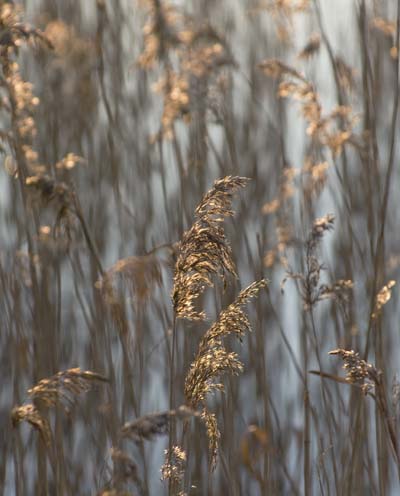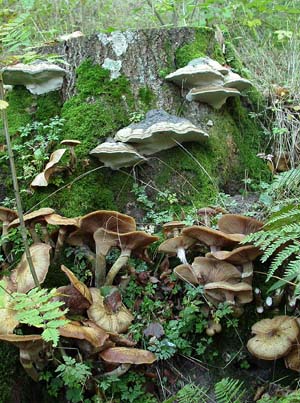Meadow and bog
At the west end of Lake Ørnsø is a 40 hectare large meadow and bog area, where open meadows alternate with dense willow scrub.
The operation of the meadows
Until about 1960, the meadows in Denmark were intensively used for livestock feed. The farms were more likely to grow on grass in the summer, than today. Simultaneously there were more working horses than tractors in agriculture, so at that time the natural fodder resources of nature were really used. As labor wages were low at the same time, considerable efforts were made to maintain the ditches that would ensure that the meadows were dewatered to the necessary extent.
Operation ceases
Until the 1980s, large parts of this moist area were thus also used for grazing and haymaking. During the 1970s and 80's, the maintenance of the ditches ceased, after which the water level in the area increased. Livestock grazing and haymaking therefore ceased and the area has since become overgrown first with high perennials and grasses and since with willow scrub and alder. The area thus provides a good picture of how many of the meadows in Denmark have taken place.
In some places, natural care is undertaken with grazing and haymaking to save important meadows, elsewhere for reasons of resource and lack of livestock you have to accept that the meadows grow up.
A development for better or worse
As the overgrowth continue, plants like globe flower and western marsh orchid disappear and are replaced by more common species such as meadowsweet and reed. Birds like geese, lapwing and snipe disappear, but in turn, the area is now developing into one of the Silkeborg area’s best breeding areas for the nightingale. At the same time, the area evolves towards untouched nature - on nature's grounds and not on human. It means, that the open parts in the area are slowly disappearing because the willow scrub is spreading. In the longer term one can imagine that the willow scrub is replaced by alder forest, which in this wet area probably will be the final step in the development from culture to nature.
A small river section
Where River Funder Å will end up in Lake Ørnsø, a delta has been created over time, deviding the river in several smaller runs. The delta is created due to erosion of sand and soil, which is transported by the river. The sand is deposited where the water flow ceases, that is, at the meeting with the still water of the lake. Due to deposition, there are always changes in the delta. The smaller streams change, so do the banks that occur.


